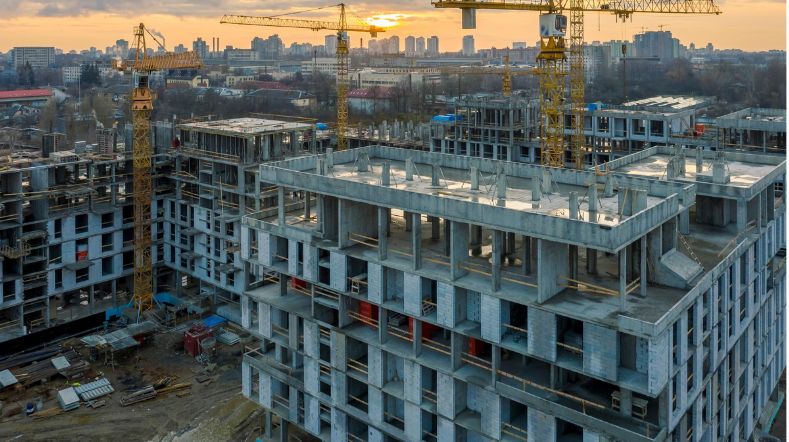
Foundation problems throughout the Netherlands
The soft soil in large parts of the Netherlands has always presented a challenge to builders. Throughout the centuries, clever solutions have been devised, such as wooden piles to support the foundations of buildings and infrastructure. Did that solve the problem? Unfortunately not. Due to various factors, foundation problems are increasing significantly throughout the Netherlands.
The cause of foundation problems
Climate change, policy choices and soil subsidence are the main causes of these growing foundation problems. Global warming is causing sea levels to rise and rivers to overflow their banks more frequently. There has also been an increase in heavy rainfall, with huge amounts of rain falling in a short period of time, alternating with prolonged periods of drought.
Management of groundwater levels also plays an important role. Sometimes the government deliberately chooses to lower or raise the groundwater level in a certain area. And then there is the problem of subsidence in different parts of the Netherlands.
Consequences of foundation problems
Many old buildings and large sections of our infrastructure in the Netherlands are supported by wooden piles. As groundwater levels increasingly start to fluctuate, these piles can begin to rot. This means that we are on the threshold of a period during which we will be confronted with serious foundation problems.
But these wooden piles are only part of the problem. Up until the 1970s, in addition to building wooden pile foundations, construction companies also built shallow foundations, which in Dutch are also known as ‘op staal’ foundations. And these shallow foundations, too, appear to be sensitive to subsidence and fluctuating groundwater levels.
Leaning houses or cracks in walls
Some buildings suffer such severe subsidence or damage to their foundations that they start to visibly lean to one side, developing truly dangerous structural issues. In other buildings, the problem is limited to small cracks in the walls, but these must nevertheless be inspected to determine whether they are the first signs of more serious foundation problems.
Subsidence in the Randstad and beyond
So far, the really serious foundation problems concerning wooden piles have largely been limited to a number of cities in the Randstad conurbation, such as Rotterdam, Dordrecht and Gouda. These cities already have a lot of expertise in mapping and repairing foundation damage.
Now that the rest of the Netherlands is increasingly facing foundation problems, it’s important to share the knowledge that is already available. And that applies even more to sharing knowledge about problems regarding the shallow op staal foundations, because we currently have little experience in this area.
Take action now
Processes in the subsurface are often complex, which makes it difficult to accurately predict in which locations foundation problems may develop. At the same time, it’s a problem that many Dutch people will eventually be confronted with. In addition, these foundation problems will cause a lot of economic damage.
Experts estimate that the total cost of foundation damage will add up to 20 to 30 billion euros by 2050. This estimate assumes that the Netherlands will, so far as is possible, take extensive measures to prevent foundation damage. If these measures are not taken, the total cost of the damage could add up to a far higher figure.
Knowledge and recommendations
To get a clear picture of the foundation problems, at TNO we develop and share our knowledge of this problem. For example, together with Deltares, we recently wrote a report on foundation issues. The three main recommendations are as follows:
- Take steps to gain a better understanding of the nature, size and distribution of the foundation problems, as well as a better understanding of exactly how such damage occurs.
- Look for new techniques and guidelines for collecting and extracting data and information on foundation problems.
- Develop new concepts that can prevent foundation problems or make it possible to repair damage to foundations in a fast and effective way.
The government’s role
The report was commissioned as part of the government programme aimed at tackling the foundation problems [Rijksprogramma Aanpak Funderingsproblematiek]. This programme is managed by the Netherlands Enterprise Agency (Rijksdienst voor Ondernemend Nederland, RVO).
Together with its partners, the RVO works to improve knowledge of the foundation problems in the Netherlands and to find appropriate solutions. There is still a lot of work to be done in this area, and time is running out. For this reason, TNO is now devoting much more attention to this topic than previously.
Get inspired
Industrial and conceptual construction


Reliable Structures


Building materials


Building Materials and Structures


Western North Brabant becomes hotspot for biobased building blocks for the construction industry


